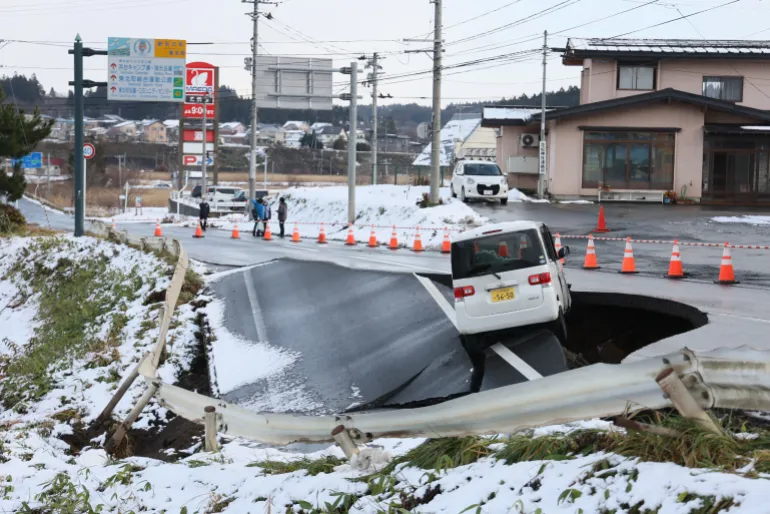Magnitude 6.7 earthquake hits Japan’s northeast, tsunami warning issued | Earthquakes News
DEVELOPING STORYDEVELOPING STORY,
A tsunami warning has been issued following a strong quake off northeast coast of Japan.
Published On 12 Dec 2025
An earthquake with a preliminary magnitude of 6.7 has hit Japan’s northeastern region, prompting a tsunami advisory from the Japan Meteorological Agency (JMA).
The earthquake struck on Friday off the coast of Aomori Prefecture at 11:44am local time (02:44 GMT) at a depth of 20km (12.4 miles), according to the JMA.
Recommended Stories
list of 4 itemsend of list
The United States Geological Survey (USGS) also said that the quake measured 6.7.
Japan’s Nuclear Regulation Authority said there were no immediate signs of abnormalities at the region’s nuclear facilities.
National broadcaster NHK said that the level of shaking from the quake was less than a bigger magnitude 7.5 earthquake that hit in the same region on Monday and tore apart roads, smashed windows and triggered tsunami waves of up to 70 centimetres (2.3ft).
Following Monday’s quake, which injured at least 50 people, the JMA issued a rare special advisory warning to residents across a wide area, from Hokkaido in the north to Chiba, east of Tokyo, to be on alert for an increased possibility of a powerful earthquake hitting again within a week.
The northeast region is haunted by the memory of a massive magnitude 9.0 undersea quake in 2011, which triggered a tsunami that left about 18,500 people dead or missing.
The JMA issued its first special advisory in 2024 for the southern half of Japan’s Pacific coast warning of a possible “megaquake” along the Nankai Trough.
The government has said that a quake in the Nankai Trough and subsequent tsunami could kill as many as 298,000 people and cause up to $2 trillion in damages.
Amid fears of a “megaquake”, NHK reported on Thursday that people in the northeast of Japan were stocking up on disaster-related goods such as torches, water storage tanks and support poles to prevent furniture toppling over due to tremors.
One shop in Hokkaido’s Hakodate City reported sales of bottled water and disaster kits tripling following Monday’s quake.
“We decided to prepare, so I bought disaster kits for everyone,” a male customer in his 30s told NHK while visiting a shop with his family.
Japan sits on top of four major tectonic plates along the western edge of the Pacific “Ring of Fire” and is one of the world’s most seismically active countries.

